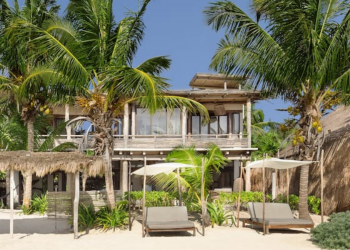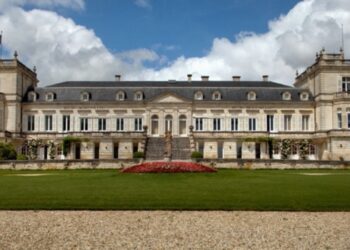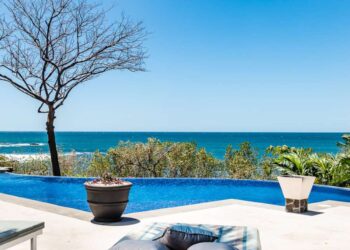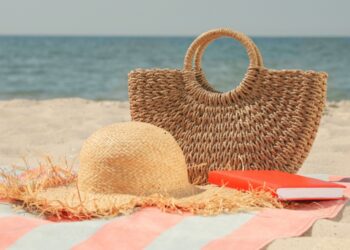Great news, chocolate, is indeed good for us. In Barcelona, a city known for its Modernist architecture, vibrant Catalan culture, gorgeous climate, beaches, and love of chocolate, a new breed of artisans are out to redefine the chocolate experience. Meet the chocolatiers and chocolate lovers making delicious guilt-free chocolate and inspiring a new style of travel adventure for foodies.
Spain’s Chocolate History
The founder of Barcelona’s Delicious Chocolate Tour, Carla Perejoan Barba, says that the first solid chocolate was created by a Barcelona native in 1777. Called “Xocolata a la Pedra,” or “stone chocolate” in Catalan – the mother tongue of the Catalonia region of which Barcelona is the capital – it was meant to be chopped up and melted into a hot chocolate or grated into desserts. Today, Barcelona, with its long tradition of chocolate-making (and of course consumption) has become renowned for a rise in chocolatiers creating artistic styles of chocolate. At the heart of this trend is the focus of eliminating sugar to allow for the unique flavors and diversity of cacao (cocoa beans extracted from the cacao tree are the natural ingredient that makes chocolate).
Meet Barcelona’s Chocolate Makers and Aficionados
Chocolate Amatller
Casa Amatller, designed by architect Josep Puig i Cadafalch, is one of the most iconic buildings on Passeig de Gracia, a famed central street in Barcelona. Built between 1898 and 1900, for chocolatier Antoni Amatller, inside is Casa Museo Amatller where you can view the historic collection of chocolates by Chocolate Amatller, a chocolate brand founded in 1797. Nearby at Provenca 269, visitors can enjoy sampling and buying chocolates from the storied Barcelona-born Chocolate Amatller.
Hofmann Barcelona
You can find this well-known pastry shop in Barcelona’s Born neighborhood, one of the city’s most historic districts full of quaint narrow windy streets. The pastry shop also has a renowned pastry-making school nearby. Hofmann is beloved for its innovative confections such as The Volcanic, made with macadamia nut praline, flor de sal – a thin salt that forms on seawater’s surface as it evaporates – cacao and chocolate air that literally explodes with flavors. Pastry Director Miquel Guarro is on a mission to crack the cacao to sugar ratio to unearth the delicious flavors of natural cacao. “Pure chocolate contains a very bitter flavor without sugar. The 30 percent sugar to 70 percent cacao ratio brings out its hidden flavors.” Chocolate lovers can visit the store to stock up on its signature sweet treats including the favorite “dessert +18,” made from pecans, sweet chocolate cake mixed with a special rum, and creamy milk chocolate that is all wrapped in a cacao rich mousse.
Delicious Chocolate Tours
These chocolate-filled adventures take you on a tour of Barcelona’s famed chocolate stores like Escriba, Be Chocolat, and Fargas, the oldest chocolate house in Barcelona. Founder Carla Perejoan Barba explains that her “Delicious Chocolate Tour is bespoke, so every experience is different and promises an eclectic introduction into Barcelona’s varied styles of treats, flavors, and textures. Best not to have breakfast before this one.
Fargas
Fargas, which sold its first chocolates in 1827, is located on Carrer de Pi on the corner of Placa de la Cucurulla, in the Gothic quarter of Barcelona. The oldest functioning millstone used to grind cacao beans is found in this store and visitors can see all sorts of delicacies in this shop that draw on Fargas’ almost two centuries of history. Catanies, caramelized almonds coated with white chocolate and cocoa powder, are a typical Catalan product sold at Fargas that are also available sugar-free and not to be missed!
Escriba
Escriba is an elegant chocolate and pastry shop on La Rambla, another of the city’s famed streets that is home to Barcelona’s Boqueria market and historic buildings like Liceu Theater. Run by Christian Escriba, a fourth-generation pastry chef and one of the most famous in Barcelona, customers can enjoy a hot chocolate or one of his other delicacies like the “xuxo” that originated in Girona, a city about one and a half hours by car from Barcelona. Layers of butter, puff pastry rolled into a small pastry that is fried and filled with thick and creamy melt-in-your-mouth custard with a slight crunch of its thin layers is one of the non-chocolate treats at Escriba that is an experience to remember. Almost as delicious as the confectionery is the Escriba store, whose interiors feature a beautiful ceiling and stained glass peacock in the Modernist Art Nouveau style unique to Catalonia. The store opened initially in 1903 and the exterior combines all sorts of materials such as stained glass, wood, stone, mirrors, asymmetrical lines and dynamic shapes inspired by nature. Sweet fix complete, stroll the area and its pedestrian walkway in the center of the street to see street performers, artists, and flower sellers.
Be Chocolat
Diana Alfonso Garcia, a manager who works for Be Chocolat, a brand started by a Belgian and a Catalan chocolatier, with a store located in the Gothic quarter, is devoted to celebrating Barcelona’s rich history and connection to chocolate and chocolate making. “The port of Barcelona was the entrance to markets for everything coming from the New World” and that of course included cacao which entered the Iberian Peninsula through Barcelona in the 16th century. At Be Chocolat, the artisanal chocolate creations Garcia explains, “are infused with cacao from different parts of the world to create distinct types of chocolate. Cacao is always fair trade and comes from plantations where they don’t use chemicals. Our dark chocolate is vegan and gluten-free, it doesn’t contain milk proteins or flour. Make no mistake, their collection of chocolates which features over sixty varieties, many of which are as healthy as they are delicious.
Espaisucre
Espaisucre, also known as “Sugar Space,” is a pastry school with a small dining room in the Born neighborhood that has created the “Chocoaddict Valrhona” menu. Guests sit around a large table to enjoy a dessert-focused feast of treats created with high-end chocolate brand Valrhona, founded in France almost a century ago. This highly creative menu experiments with acidic, sour, spicy, and balsamic flavors with white, dark, and milk chocolate accents and very little sugar.
Enric Rovira
Bold new chocolate flavors and combinations such as chocolate with fried corn and salt, Campari, smoked whiskey, soy, pieces of ham, and vinegar, are some of the innovative combinations created by celebrated chocolatier Enric Rovira who encourages the people of Barcelona to add some chocolate to their daily lives just as the French do. Following in the footsteps of his pastry-shop owning parents, he devoted his career to the creation of artisanal chocolate from his workshop is outside of Barcelona in a town called Castellbel i el Vilar, surrounded by views of the craggy mountain range of Montserrat in the distance and there is a cafe there where you can taste some of his creations.
Considered a highly influential figure in Barcelona’s long and burgeoning relationship with chocolate, Rovira even mastered the art of turning chocolate into a gas, a process done in 2004. In the past, he created small handcrafted chocolates and used chocolate as a gas to enrich the smell of his chocolates. Rovira also taught at Harvard class about cocoa butter, using cooking as a way to explain science to students and many other famous figures from the culinary world.
Among his must-try signature delicacies are those in the Barcelona collection such as the “Gaudi Hexagon” modeled on the design that the architect Antoni Gaudi ended up using for “La Pedrera,” or Casa Mila, one of the incredible structures he created on Passeig de Gracia. Other exceptional products include “Turrons of La Pedrera.” A turron is a confection that is typically given at Christmastime throughout Spain and elsewhere in southern Europe and it is usually made of honey, sugar, and egg white and toasted almonds and is typically tablet-shaped. Another unique chocolate creation that Enric Rovira sells is the “panot de flor,” based on a type of tile that architect Josep Puig i Cadafalch created for casa Amatller and is found on many sidewalks in Barcelona. Dark, blond and milk chocolates of this type are produced in Rovira’s workshop.
“I am in love with Barcelona, I was born here and just walking on the streets. and looking at the tiles is a continual reminder of my chocolates.”







